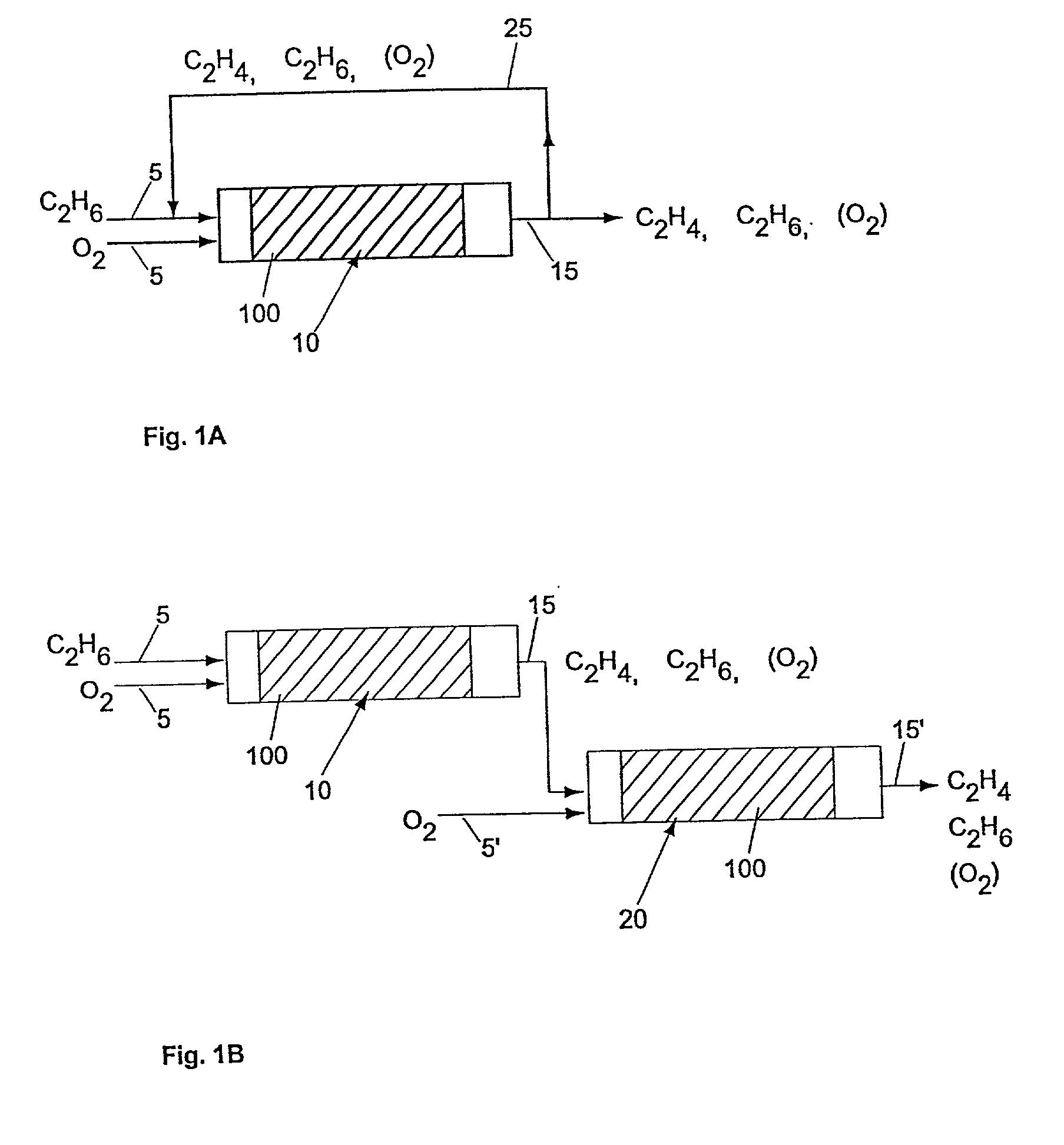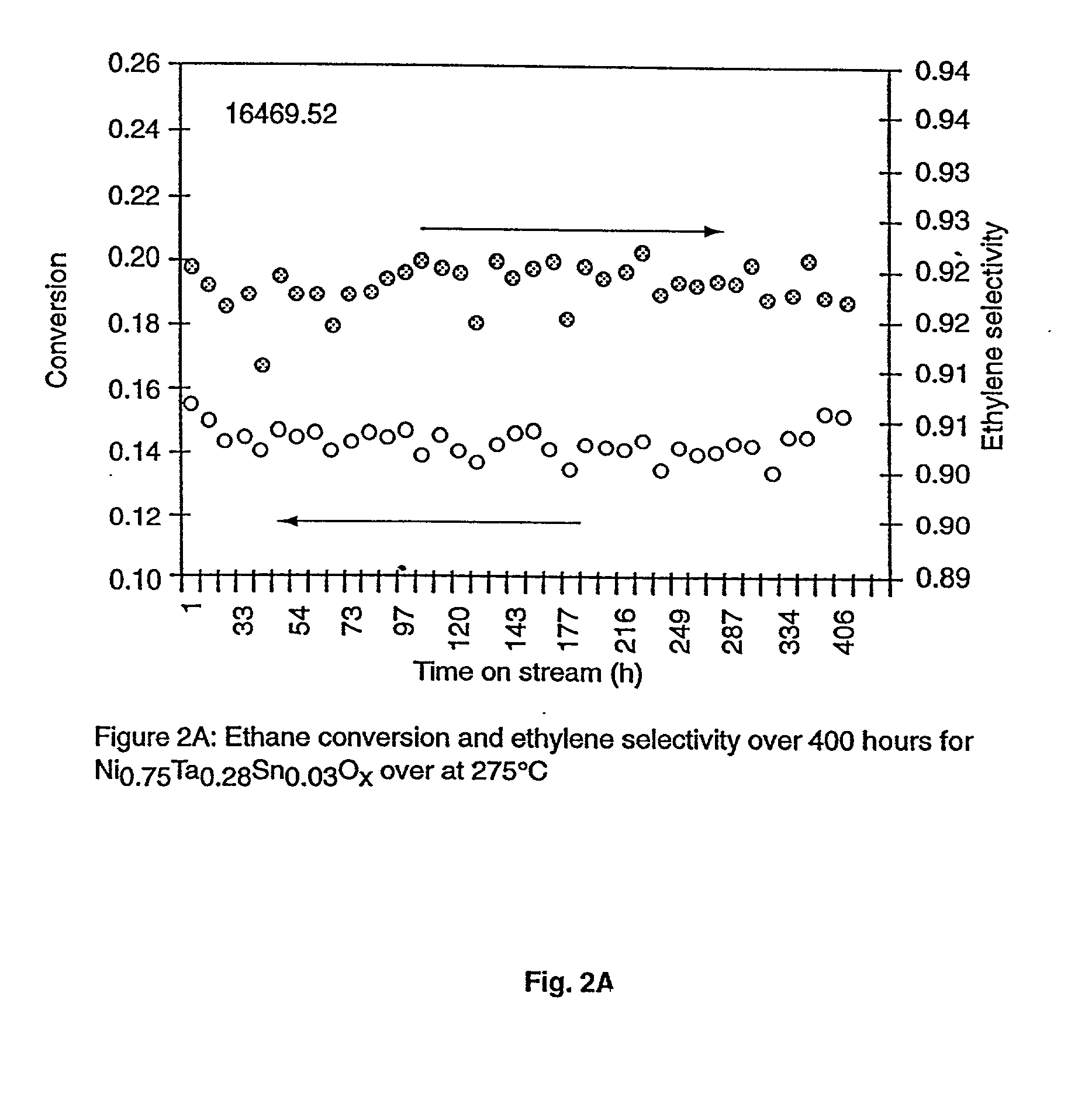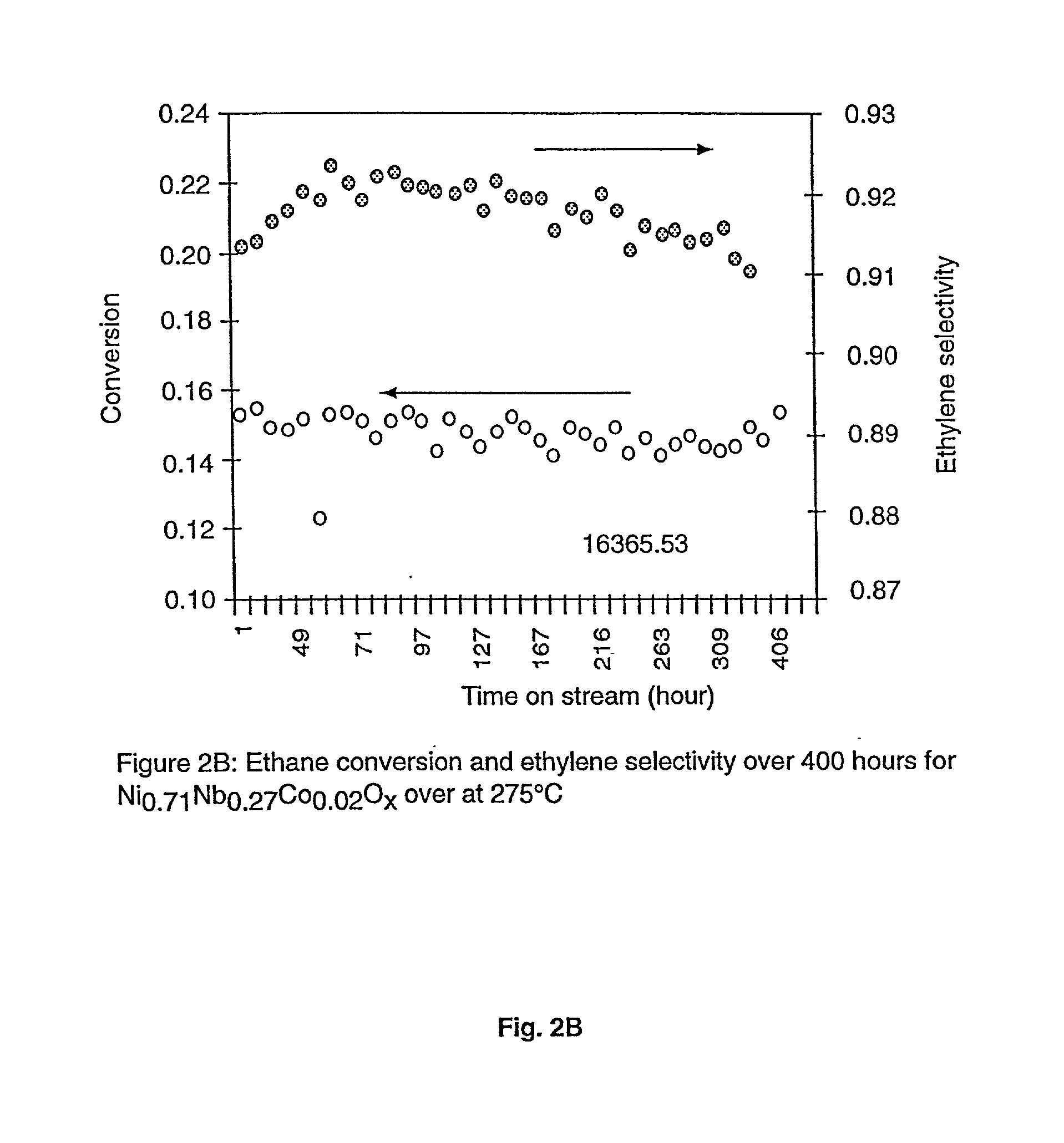Ni catalysts and methods for alkane dehydrogenation
- Summary
- Abstract
- Description
- Claims
- Application Information
AI Technical Summary
Benefits of technology
Problems solved by technology
Method used
Image
Examples
example 1
ODHE over NiNbTi Oxide and NiTaTi Oxide Catalysts. (#14839 / 15156)
[0093] Catalysts were prepared in small quantities (.about.100 mg) from nickel nitrate ([Ni]=1.0 M), titanium oxalate ([Ti]=0.713 M), niobium oxalate ([Nb]=0.569 M), and tantalum oxalate ([Ta]=0.650 M) aqueous stock solutions by precipitation with tetramethylammonium hydroxide ([NMe.sub.4OH]=1.44M). Briefly, a library of catalyst precursors were prepared by dispensing various amounts of aqueous stock solutions using a Cavro automated liquid handling robot to an array of glass vials held in an aluminum substrate. The precipitating agent, NMe.sub.4OH solution, was added to the various catalyst precursor compositions in about 1.3 equivalent of acid and metal ions, by high-speed injection from a syringe head. The high-speed injection of the base provides mixing of the catalyst precursor solution and precipitation agents, thereby effecting precipitation of solid catalyst materials. To further insure well mixing, additional ...
example 2
ODHE over NiNbTaTi Oxide Catalysts. (#16160 / 16223)
[0103] Catalyst compositions comprising various relative amounts of oxides of Ni, Nb, Ta and Ti were prepared in small (.about.100 mg) quantities by precipitation substantially as described in connection with Example 1. Table 2A summarizes the composition and amounts of the various catalyst compositions.
[0104] In a first set of experiments, the dried catalyst compositions were calcined to 300.degree. C. in an atmosphere of air with an oven temperature profile: ramp to 300.degree. C. at 2.degree. C. / min and dwell at 300.degree. C. for 8 hours. The mixed metal oxide catalysts (.about.50 mg) were screened in the fixed bed parallel reactor. The performance characteristics of these catalysts for ethane oxidative dehydrogenation at 300.degree. C. with relative flowrates of ethane:nitrogen:oxygen of 0.42:0.54:0.088 sccm are summarized in Table 2B (ethane conversion) and Table 2C (ethylene selectivity). The catalysts were also screened for e...
example 3
ODHE over NiNbZr / NiTaZr Oxide Catalysts. (#14840 / 15157)
[0114] Catalysts were prepared in small quantities (.about.100 mg) from nickel nitrate ([Ni]=1.0 M), niobium oxalate ([Nb]=0.569 M), tantalum oxalate ([Ta]=0.650 M), and zirconium oxalate ([Zr]=0.36 M) aqueous stock solutions by precipitation with tetramethylammonium hydroxide. The solid materials were separated from solution by centrifugation. The supernatant was decanted and solid materials were dried at 60.degree. C. under a reduced atmosphere. Table 3A summarizes the composition and amounts of the various catalyst compositions.
[0115] In a first set of experiments, the dried catalyst compositions were calcined to 300.degree. C. in an atmosphere of air with an oven temperature profile: ramp to 300.degree. C. at 2.degree. C. / min and dwell at 300.degree. C. for 8 hours. The mixed metal oxide catalysts (.about.50 mg) were screened in the fixed bed parallel reactor. The performance characteristics of these catalysts for ethane oxi...
PUM
| Property | Measurement | Unit |
|---|---|---|
| Fraction | aaaaa | aaaaa |
| Fraction | aaaaa | aaaaa |
| Fraction | aaaaa | aaaaa |
Abstract
Description
Claims
Application Information
 Login to View More
Login to View More - R&D
- Intellectual Property
- Life Sciences
- Materials
- Tech Scout
- Unparalleled Data Quality
- Higher Quality Content
- 60% Fewer Hallucinations
Browse by: Latest US Patents, China's latest patents, Technical Efficacy Thesaurus, Application Domain, Technology Topic, Popular Technical Reports.
© 2025 PatSnap. All rights reserved.Legal|Privacy policy|Modern Slavery Act Transparency Statement|Sitemap|About US| Contact US: help@patsnap.com



